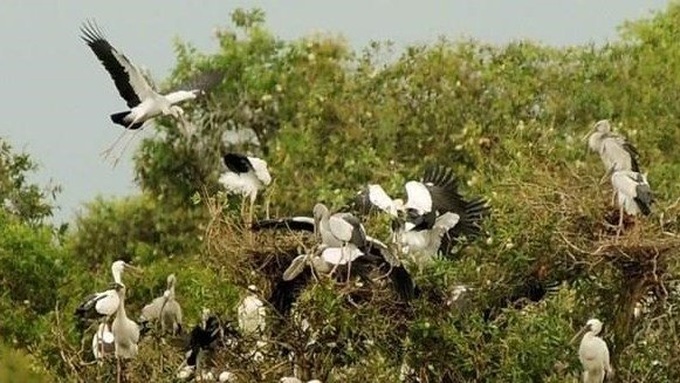A US$625,000 project for ecosystem management at Tram Chim National Park in the Mekong Delta province of Dong Thap was launched at a conference held by the Vietnam Forest Inventory and Planning Institute (FIPI) in Ho Chi Minh City on August 5.

Birds flock to Tram Chim National Park. (Photo: VNA
Addressing the event, FIPI director Nguyen Nghia Bien noted that from its source on the Tibetan plateau, the Mekong River flows 4,800 km through 6 countries, including China, Myanmar, Laos, Thailand, Cambodia and Vietnam, resulting in a unique biotope, biodiversity and fertile delta. The Mekong River basin has attracted more and more public attention since each member country is exploiting the river water resources for its own development purposes, bringing about potential consequences and challenges to one another.
The Tram Chim National Park, located in the Mekong Delta sub-region, and Dong Thap authorities have strived for sustainable ecosystem management of the reed fields and wetland areas. Unexpected complications have arisen, however, due to lack of a sustainable and effective management model. The presence of Sarus cranes and other birds in the National Park is decreasing at an alarming rate.
Against this backdrop, the Asia-Pacific Network for Sustainable Forest Management and Rehalibitation (APFNet) has agreed to partially fund the "Demonstration project of general management plan for forest ecosystems of the Mekong sub-region". The project, with a total capital of nearly VND 14.48 billion (US$ 625,330), of which over 70 percent are provided by APFNet and the rest by Vietnamese counterparts, will be carried out by FIPI for a period of 4 years at the Tram Chim National Park.
The project aims to set up a demonstration model for sustainable general management for wetland ecosystems and forests of the park, contributing to the improvement of the biophysical, economic and social structures and functions in the Mekong basin as a whole.
The project is also expected to support the park in improving wetland monitoring capability; building a sustainable forest management plan; reducing human impact on nature by providing local people with substitute means of livelihood; raising public awareness and building capacity for local officials.
Another goal of the project is to raise public awareness of wetlands and their conservation and to reduce adverse impacts on biodiversity. The project will also engage local women in activities to improve livelihoods; and provide knowledge on a smart and effective exploitation of the submerged land.
